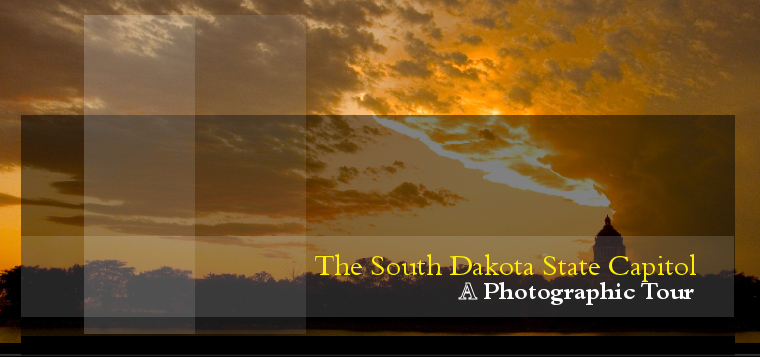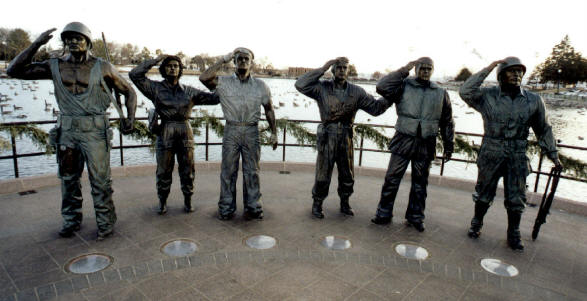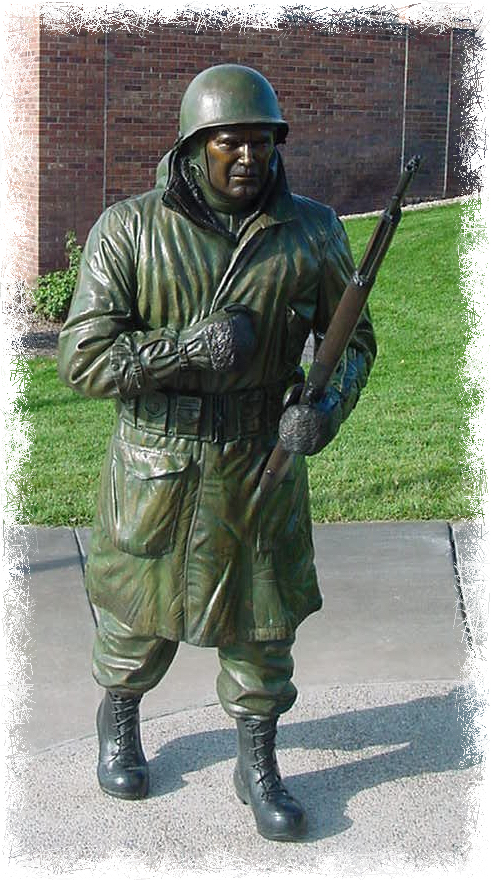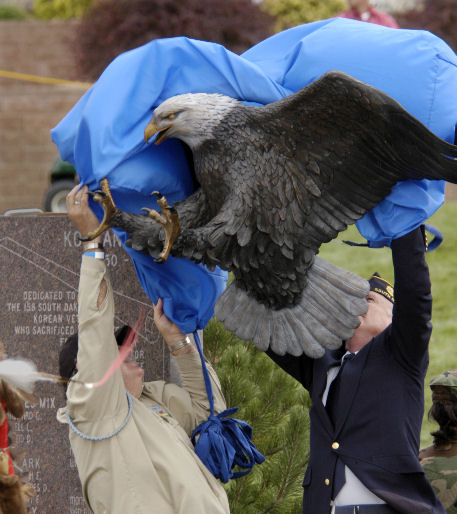|
![]()
![]()
World War II Memorial
The memorial consists of six bronze figures representing the branches of service in which South Dakotans served during WWII. They are portrayed as warriors fresh from battle; the memories burnt into them of the horrors and atrocities of war as well as, the acts of selflessness, bravery and valor. They are not intended to be spit and polish soldiers on parade, rather warriors in the field of honor. They are to be a reminder for all of us what would the world be like today if the United States of America and the Allied countries had not prevailed in World War II. They are set on a peninsula that was constructed into Capitol Lake. The bronze warriors will face the current Korean and Viet Nam Memorials and flaming fountain. The figures are from 6 feet to 6 feet 7 inches in height. They weigh close to two tons. A native Dakota granite stone is in front of the bronzes and is inscribed with “South Dakota WWII Warriors: Why they fought—For Flag—For Country—For All of Us.”
Korean War Memorial
Near the North Korean and Chinese borders, United States troops faced a surprise invasion by the Chinese Communists. More than 125,000 troops swept down on the U.S. force of 25,000. During that battle alone, U.S. troops sustained more than 6,000 casualties. The horrific winter conditions caused more than 6,000 cases of frostbite. U.S. forces stopped the huge enemy force then retreated back to the south before resuming a war that lasted three years.
The Korean War was an extremely bloody conflict. The United States lost 54,000 troops in just three years, nearly as many as those lost in the decade-long Vietnam War. There were an estimated 1,313,000 casualties and one million refuges during this 'Forgotten War'.
Unlike their comrades from WWII, the Korean veterans returned to life in the states without fanfare or acclaim. Even though Korean War veterans’ heroic efforts were not derided like those of the Vietnam Veterans, Korean War Vets were often ignored by the American public. This was partly due to the political peace that never set a victorious outcome to the war.
The South Dakota Korean War Memorial portrays a brave American GI devastating enemy forces and artic weather during the Chosin Battle. The soldier is still fighting as he glances over at his fallen brethren, their names now upon a wall. He is low on ammunition, frostbitten, tired and unshaven, but with a look of determination, he gives the soldiers a Centurion salute and completes his mission.
Vietnam War Memorials
The most recent addition to the State of South Dakota's Memorials is the Vietnam War Memorial.
The South Dakota Vietnam War Memorial is a tribute to the veterans who returned home from the war to fight a sometimes more painful battle on the homefront. Vietnam was the first war to be brought directly to the American public’s living room with an unending display of graphic imagery: U.S. soldiers firing at unseen enemies in jungles and across rice paddies; medics dodging enemy fire to reach the side of a young soldier covered in blood and near death; and clouds of black smoke rolling skyward from the burning huts of a village destroyed to keep it out of the hands of the Vietcong. The merits of the war were not just debated at podiums and in war rooms but over dinner tables, in the streets and in the field itself.
As casualties increased and the war grew ever more unpopular in the United States, Vietnam soldiers heralded as heroes in the jungles were condemned as no better than criminals in their hometowns. The South Dakota Vietnam War Memorial takes one soldier, as a symbol of the many South Dakotans who served during this violent conflict, and elevates him to the status they all deserve: brave individuals who served their country at a time when it took as much courage to come home as it did to fight.
Also unveiled at the Vietnam War Memorial Dedication was a statue of an American Eagle. This bronze work was specifically dedicated to South Dakota's native American population, and their immense contributions to our Nation's armed forces in time of war.
The eagle finishes out and joins the two sections of granite panels memorializing South Dakota's casualties during the Korean and Vietnam Wars.
Next Stop: Conclusion of Tour
Previous Stop: Hilgers Gulch
Copyright 2007 South Dakota Bureau of Administration | Frontpage-Templates.org | E-Mail BOA Webmaster



